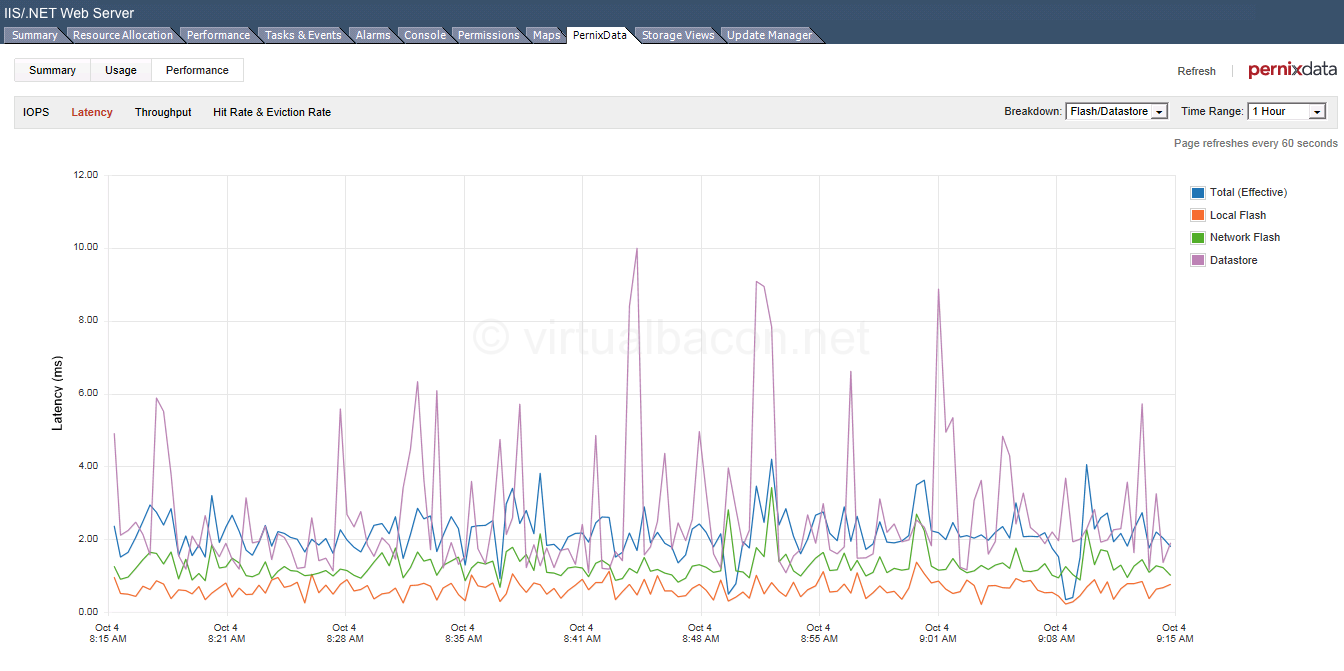Real World IIS/.Net Workload Acceleration with PernixData
Continuing the series of posts on real world acceleration of enterprise applications this post demonstrates results of accelerating Windows 2003 and 2008 IIS Web and Application servers running .NET in a mid-size enterprise.
A quick refresher on the environment:
8 node ESXi 5.0 Update 2 cluster with Dell M620 blade servers
10 Gb networking
FC storage connectivity
Back-end array with about 250 spindles (a combination of FC, SAS, and SATA disks) able to deliver approximately 35,000 - 40,000 IOPS.
PernixData FVP installed with a 400 GB Intel S3700 SSD drive in each host.
A little under 200 VMs accelerated with write-back (WB) + two peers for redundancy.
The server names have been changed to provide a description of the primary application running on them.
Application: Windows 2003 Std 64 bit running IIS/ .NET Web Server.
Description: Front-end internet facing web server used by external agents. The server is a portal to a web application, authenticating users and proxying requests for data from via other servers.
Latency:
In the graph below you can see that over the course of an hour near the start of the business day the latency of the datastore varies greatly peaking at 10 ms at one point. Even during this time however the latency as seen by the virtual machine hovers around 2 ms, with lows of approximately 0.5 ms and a high just over 4 ms, including two replicas for the writes. The latency of the flash devices, represented by the orange line, is consistently under 1 ms. From a user experience perspective after implementing FVP page loads and response times were much quicker and "popped" between clicks and page transitions, and overall performance was much more consistent and predictable.








